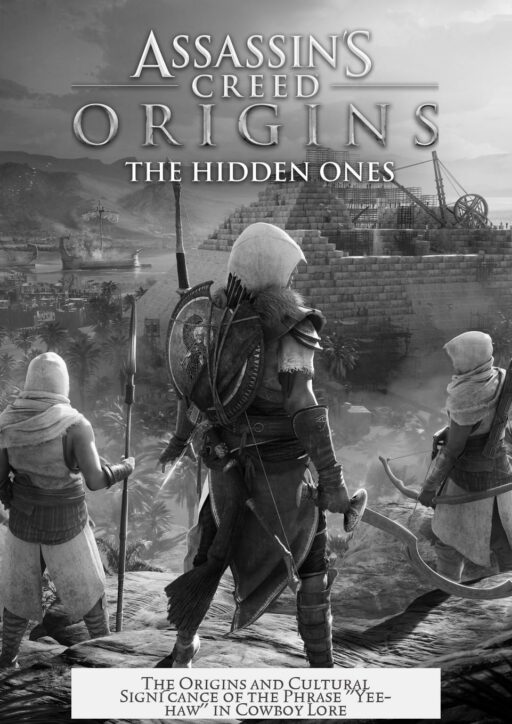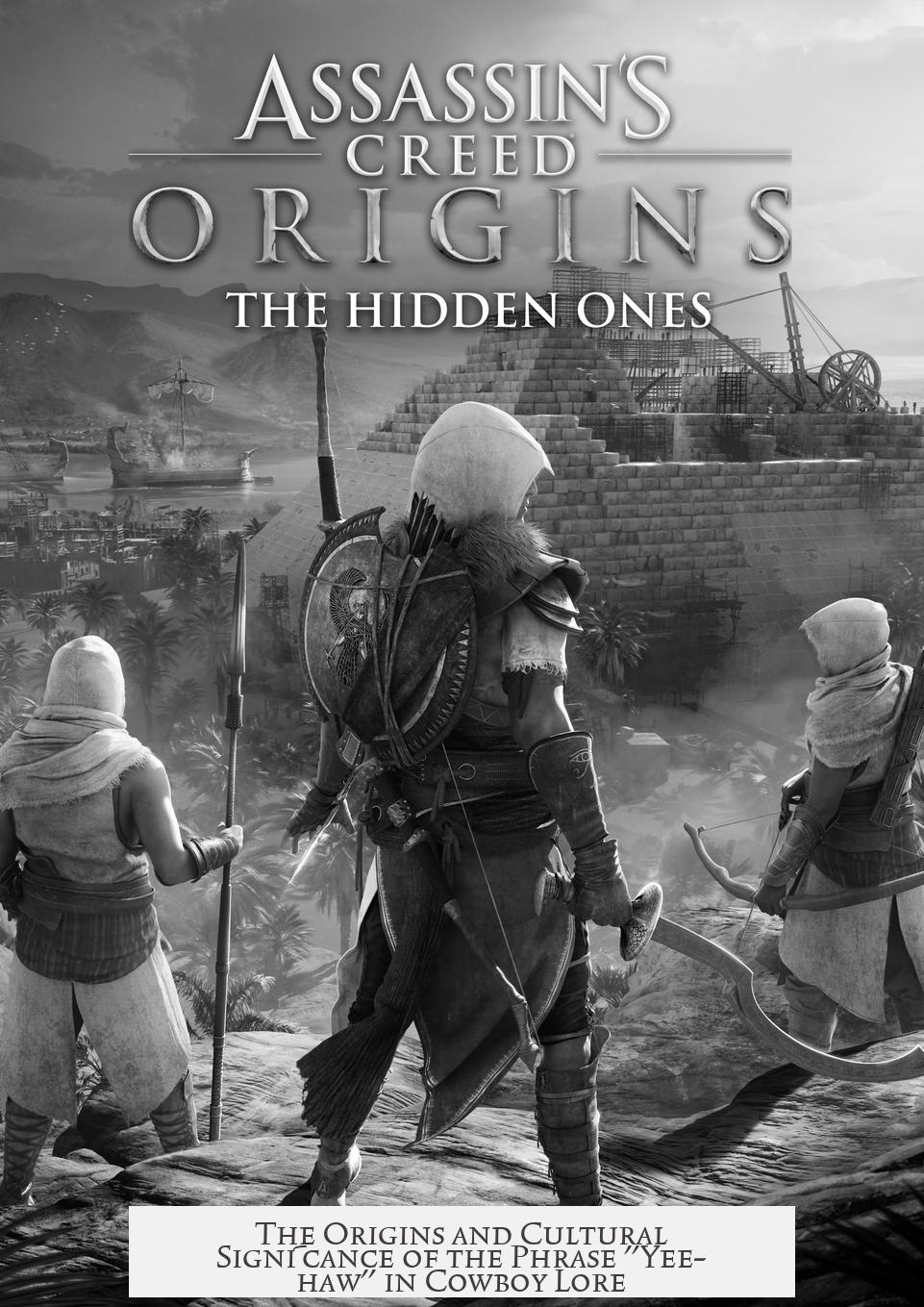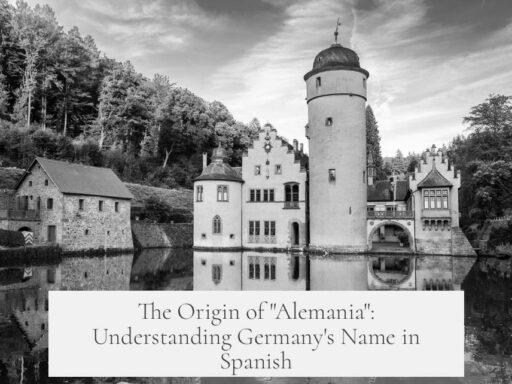The phrase “Yee-haw,” often linked to cowboys in media, originates from old directional commands used to guide horses. Specifically, “gee” signals a turn to the right and “haw” signals a turn to the left. These commands date back to at least the 19th century and were part of standard equestrian language. Over time, “gee” and “haw” evolved, influenced by rural American Western slang featuring many “y-” starting exclamations, into the general, spirited shout “Yee-haw.”
The basis of “Yee-haw” lies chiefly in horse-driving commands. The command “gee,” pronounced with a soft “g” as in “genie,” instructs the horse to move right. “Haw” directs it to go left. These terms were in routine use by the 1800s and appear even outside cowboy contexts, as illustrated by Jack London’s 1911 story using “haw” for sled dog directions.
The transition from utilitarian commands to an exuberant expression like “Yee-haw” likely reflects the influence of rural Western slang. The American West produced numerous interjections beginning with “y,” including “yippee,” “yo,” “yeah,” and “yahoo.” This linguistic environment made the leap to “Yee-haw” natural as a cheerful, rallying call.
Despite its popular association with cowboys, there is no direct historical evidence that “Yee-haw” was a widely spoken phrase among actual cowboys. Documentation focuses more on etymology than usage frequency. The phrase gained its iconic status primarily through media portrayals rather than verified common use in the Old West.
- “Yee-haw” evolves from “gee” and “haw,” the commands for right and left turns for horses.
- Its transformation is influenced by “y-” starting exclamations typical in rural American Western slang.
- No clear proof exists that many cowboys commonly said “Yee-haw” historically.
- Jack London’s 1911 writing shows use of these commands beyond horses, indicating their longstanding place in animal guidance.
- The phrase’s iconic cowboy association is shaped largely by media and cultural representation, not confirmed historical speech patterns.
Where Does the “Yee-haw” Come From? Was It Really a Cowboy Thing?
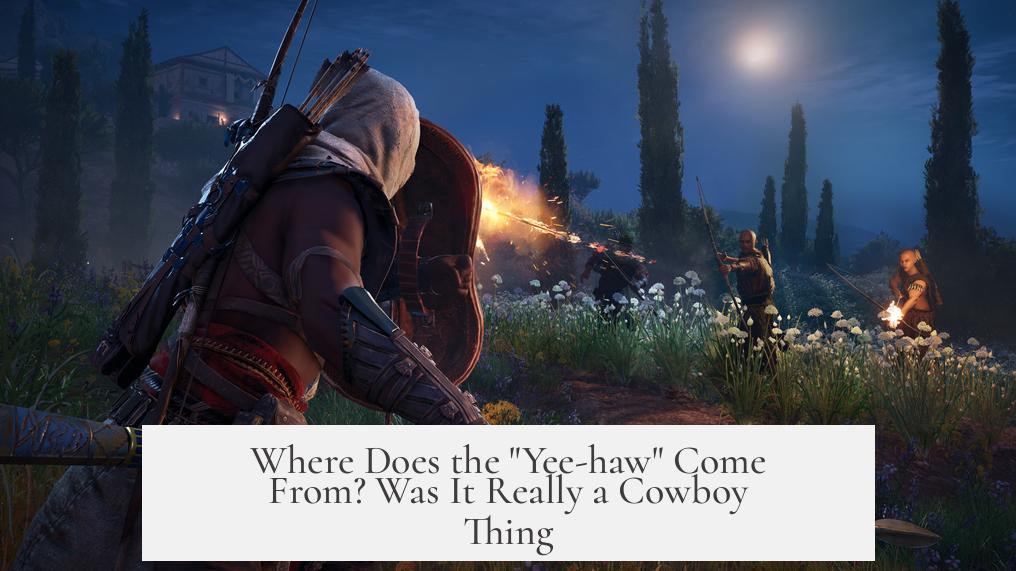
Yee-haw, that iconic, enthusiastic shout often tied to cowboys in movies and TV shows, actually has its roots not in wild celebrations but in practical commands for horses. Yes, the famous “Yee-haw” you hear in every Western or rodeo film traces back to the way riders steered their mounts.
Wondering how a shouted command for directions morphed into a joyful shout? Let’s saddle up and explore the origins and evolution of “yee-haw”—and find out if cowboys actually hollered it in real life or if Hollywood just ran with it.
Directional Commands: The Real Trailblazers
The story begins with two simple commands used by riders to direct their horses:
- Gee (pronounced with a soft “g” like in “genie”), which means go right.
- Haw, which means go left.
These commands date way back and were standard by the 19th century. By the time Jack London (yes, the famous writer) mentioned “haw” for sled dogs in a 1911 story, they were already entrenched in animal handling culture.
“The most common explanation is that its origins lie in old directional commands for horses: ‘gee’ (pronounced with a soft /g/ as in genie) to go right, and ‘haw’ to go left. These two utterances are of significant age, and certainly commonplace by the 19th century.” – Historical Linguistics
Imagine a cowboy trying to guide a horse across tricky terrain. A quick and clear “gee” or “haw” sounded sharp and clear across the open plains. No wonder these minimal syllables stuck.
From Commands to Celebration: The Yee-Haw Evolution
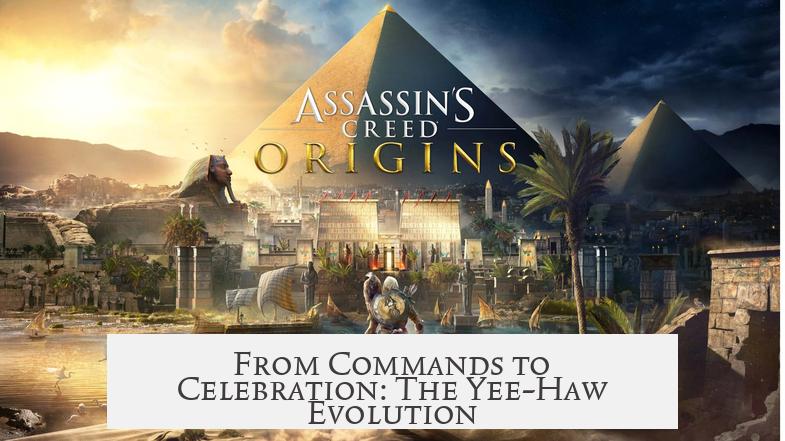
But where’s the “yee” part? Well, that’s where American rural slang enters the picture. The early Western lingo was full of exclamations starting with a “y” sound: think “yippee,” “yo,” and “yeah.” *Even* “yahoo,” that rowdy, exuberant shout, was there, borrowed from Jonathan Swift’s work but given a good ol’ Western twist.
This tendency for words to start with “y” probably nudged the shift from “gee” and “haw” (directional commands) into a swinging, general-purpose shout—enter “yee-haw.”
“The jump from directional command to general utterance is then not so difficult, especially since the lingo of the American rural west included many slang utterances beginning with y-, like ‘yippee’ and ‘yo’ and ‘yeah’ and ‘yahoo’.” – Linguistic Transition Notes
In other words, the cowboy’s “yee-haw” is basically a celebratory evolution of the practical commands “gee” and “haw,” flavored with the sonorous “yee” common in the slang of the day.
Did Cowboys Actually Say “Yee-Haw”?
Here’s a curveball: While “yee-haw” dramatically saturates media portrayals of cowboys, historical evidence confirming its widespread use among real cowboys is… slim.
The research focuses mainly on its etymology rather than how often the phrase was yanked from cowboy throats during cattle drives.
This ambiguity opens up two possibilities:
- It was a genuine part of cowboy slang but simply under-documented in written records.
- It circulated more in oral tradition and media portrayal later popularized it globally.
Either way, “yee-haw” perfectly encapsulates the spirit of adventure and ruggedness associated with the cowboy image. Real cowboys might have shouted other words or nothing at all, but “yee-haw” now belongs to the collective imagination.
Why Does It Matter? The Power of Language in Cultural Identity

The “yee-haw” story reveals how language adapts and reflects cultural needs. Commands meant to steer horses expanded into joyful exclamations captivating audiences worldwide.
Think of it like a linguistic cowboy hat—functional turned iconic. The phrase soars beyond its dusty origins, symbolizing freedom, excitement, and the adventurous West.
Plus, for writers and creatives, knowing this background keeps storytelling authentic and layered. You don’t just throw in a “yee-haw” because you think cowboys said it. Now you appreciate the surprisingly rich evolution behind that whoop.
Practical Tips for Language Buffs and Storytellers
- If you’re writing a Western or roleplaying as a cowboy, sprinkle in “gee” and “haw” for authentic horse commands.
- Use “yee-haw” when your character celebrates or expresses excitement—that fits the evolved usage.
- Consider that actual cowboys might have varied their calls, adding flavor and realism by mixing in other 19th-century slang.
The Bottom Line
“Yee-haw” originates from the practical horse-driving commands “gee” and “haw.” It grew into its boisterous form under the influence of American Western slang filled with “y” sounds, becoming a fun, rousing shout. While it’s wildly popular in media portraying cowboys, its exact prevalence among real cowboys remains uncertain.
So next time you hear a holler of “yee-haw,” remember: it’s a linguistic bridge from commanding a horse’s direction to celebrating the wild, free spirit of the Old West. Maybe not everyone used it, but it sure rounds up cowboy culture like no other phrase.
Does knowing this change how you picture cowboys? Would you drop a “gee” or “haw” on your next horseback ride? Or maybe channel your inner cowboy with a classic “yee-haw” at the campfire? Let’s hear your thoughts!
Where does the “Yee-haw” phrase come from?
“Yee-haw” originates from directional commands used for horses in the 19th century. “Gee” meant go right, and “haw” meant go left. These commands were common among horse handlers and appear in historical texts.
How did the directional commands become the exclamation “Yee-haw”?
The transition happened as western rural slang influenced these commands. Many western expressions start with a “y” sound, like “yippee” and “yo.” This likely shaped “gee” and “haw” into the shout “Yee-haw.”
Was “Yee-haw” widely used by actual cowboys historically?
There is no clear evidence that “Yee-haw” was commonly used by cowboys. The phrase’s popularity is more rooted in media and slang evolution than confirmed historical cowboy speech.
Did “haw” have uses beyond horse commands?
Yes, by 1911, author Jack London used “haw” as a command for sled dogs. This shows the phrase had broader applications in animal handling beyond horses.
Is “Yee-haw” a purely modern invention or based on older language?
“Yee-haw” is based on older, established directional commands dating back to the 19th century, not just a modern creation. Its form changed over time, blending historical commands with western slang sounds.
